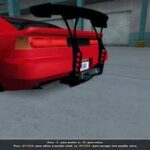Car audio tuning using Real-Time Analyzers (RTAs) requires careful consideration of microphone selection and calibration. This article addresses common questions regarding microphone calibration files, specifications, and their impact on accurate car audio tuning.
A common misconception is the need for a 90-degree calibration file when tuning car audio. This is generally unnecessary because a car’s interior creates a diffuse sound field. Sound reflects off multiple surfaces, arriving at the microphone from various directions. In this environment, a pressure microphone, like those commonly used with RTAs, measures sound pressure regardless of its directionality. Therefore, pointing the microphone upwards or forwards is generally acceptable without requiring specific calibration files.
Most affordable measurement microphones utilize similar 1/4″ electret capsules. The primary difference in their maximum Sound Pressure Level (SPL) handling comes from the applied bias voltage. Basic USB sound cards typically provide 5V, allowing for measurements slightly above 100dB. Microphones like the UMM6 or Behringer ECM8000 utilize internal preamps requiring 48V phantom power from a USB audio interface, enabling them to handle higher SPLs.
The frequency response of these microphones is usually flat below 5kHz. Above this frequency, a small response peak (1-3dB) may occur due to the capsule’s internal chamber resonance. This peak is generally followed by a slight roll-off at the highest frequencies, typically no more than 3dB at 20kHz.
Significant variations can exist between different electret capsules manufactured by various factories. Higher-quality capsules often exhibit wider bandwidth, extending down to 20Hz and up to 20kHz. Investing in quality microphones ensures accurate measurements across the entire audible frequency range.
For users with existing USB audio interfaces, using a microphone with a dedicated preamp like the PAA-1 offers advantages. The PAA-1 provides a flat frequency response from 20Hz to 20kHz and utilizes phantom power from the interface. A two-channel interface enables loopback measurements for capturing impulse responses and measuring phase.
Accurately calibrating microphones at very high frequencies is challenging. However, minor deviations from a perfectly flat response at these frequencies have minimal impact on car audio tuning since they occur outside the critical listening range. Focusing on the core frequency range relevant to car audio systems is paramount for successful tuning.
In conclusion, for car audio tuning with RTAs in a typical car environment, specialized calibration files are generally not needed. Using a quality pressure microphone with a flat frequency response in the critical listening range is sufficient for achieving accurate measurements and successful tuning results.

